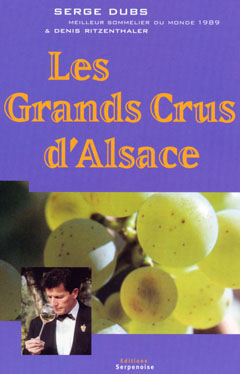|
The
appreciation criteria of Bettane :
Classification
details concerning the estate, the georegion or terroir and the
wines:
**
= producer of high quality wines in the best growths areas in
France.
T
= good quality georegion or terroir
RR
= regular quality
PP
= powerful wines |
|
Seppi
Landmann is
one of
the great personalities of French viticulture: His energetic
individuality, combined with a sense of fraternity and a joie de vivre,
are to be found, in some form or other, in the wide range of wines which
he offers wine lovers. His Alsace cremants are out of the ordinary, with
bruts de brut, young or old, which have a unique vivacity and
naturalness. His sylvaners from Vallée Noble (Noble Valley) and
Zinnkoepflé (the famous Cuvée Z), have a complexity and roundness of a
quality matched only in Franconie, on the other side of the border. After tasting
it, it is impossible to drink any other pinot blanc at all!
However, on the unique grand cru terroir of Soultzmatt, it is of
course gewurtztraminer and, to a slightly lesser degree, pinot noir which
triumph. The raw material is remarkably rich, even for southern Alsace,
and the manner of wine making seeks to obtain not superficial aromas, but
those from the very heart of the grape, which holds the character of the
soil. In all of the Zinnkoepflé wines, one therefore finds the inimitable
aroma of honey from the flowers of the Vosges, along with hints of
unmatured Munster, to a far greater degree than the usual aromas of these
varietals. With age comes a deeper bouquet and the appearance of very
noble hints of fern, lichen and undergrowth, which result in a remarkable
compatibility with all forest-style dishes based around mushrooms. We
must admit to being less convinced by the balance of the pinots noirs and
rieslings, apart from the older grand cru riesling vintages which become
stunningly similar to the gewurtztraminers after twelve to fifteen years,
providing additional proof of the relative importance of the soil as
opposed to the varietal. |
|
|
The
estate in figures:
Red: 0.50 hectare of pinot noir
White: 8 hectares. Pinot blanc 30 %, Gewürztraminer 22 %, Riesling 22 %, Sylvaner 11 %, Pinot gris 11 %, Muscat 4%.
Total
production: 65,000 bottles annual
average |


